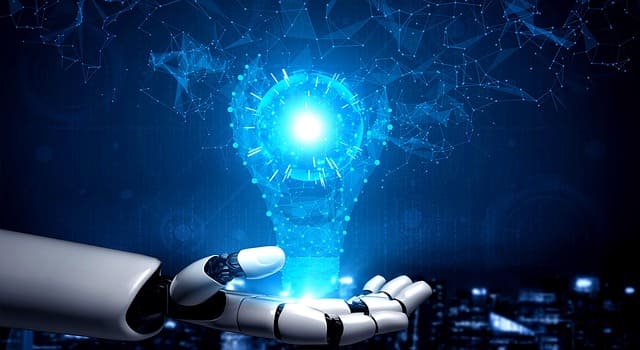Exploring the Next Era of Innovation with Generative AI
The technological landscape is undergoing a profound transformation as generative AI reshapes possibilities across industries, from revolutionizing product development and customer experiences to fundamentally altering how organizations approach problem-solving and creative endeavors.
How Generative AI Fundamentally Differs from Traditional AI
Generative AI represents a paradigm shift from its analytical predecessors by creating entirely new content rather than simply analyzing existing data or making predictions based on historical patterns.
Unlike traditional AI systems that excel at classification, prediction, and optimization within clearly defined parameters, generative models can produce novel text, images, code, music, and videos that never existed before—effectively demonstrating a form of machine creativity previously thought impossible.
The technical architecture behind these systems—primarily transformer-based large language models and diffusion models—enables them to understand context, maintain coherence, and generate responses that often appear indistinguishable from human-created content.
Transformative Business Applications Across Industries
Financial institutions are deploying generative AI to create personalized investment strategies, automate complex compliance documentation, and develop sophisticated risk assessment models that adapt to emerging market conditions in real-time.
Healthcare organizations leverage these technologies to accelerate drug discovery by generating novel molecular structures, assist in medical diagnosis through enhanced imaging interpretation, and create personalized treatment plans that consider a patient’s unique genetic makeup and medical history.
Manufacturing enterprises are revolutionizing product design processes by using generative AI to explore thousands of design iterations based on specific constraints, resulting in components that are simultaneously lighter, stronger, and more cost-effective than traditionally engineered alternatives.
Retail businesses are transforming customer experiences through hyper-personalized marketing content, virtual try-on experiences, and conversational shopping assistants that understand nuanced preferences and provide recommendations that genuinely resonate with individual consumers.
Implementation Challenges and Strategic Considerations
Organizations face significant data quality and governance hurdles when implementing generative AI, as these systems require vast amounts of well-structured, unbiased information to produce accurate and ethically sound outputs.
The computational requirements for running sophisticated generative models present both technical and financial barriers, with enterprises needing to carefully balance the benefits against the substantial infrastructure investments or cloud computing costs.
Integration with existing business processes demands thoughtful change management strategies, as employees must adapt to new workflows while maintaining productivity during the transition period.
Ethical considerations around bias, privacy, intellectual property, and transparency require robust governance frameworks that extend beyond technical solutions to include clear policies, ongoing monitoring, and accountability mechanisms.
Enhancing Human Creativity and Productivity
Generative AI serves as a powerful collaboration tool for creative professionals, functioning as an intelligent assistant that can generate initial concepts, suggest alternatives, or help overcome creative blocks during the ideation process.
Knowledge workers across disciplines report significant productivity gains when using generative AI for drafting communications, summarizing complex documents, or transforming rough ideas into polished presentations—effectively automating routine aspects of cognitive work.
The technology enables unprecedented personalization at scale, allowing organizations to create individually tailored content, products, and experiences for thousands or millions of customers without proportional increases in human effort.
Rather than replacing human creativity, these tools are proving most valuable when deployed in human-AI collaborative frameworks where the technology handles repetitive elements while humans provide strategic direction, emotional intelligence, and ethical judgment.
 Source: Pixabay
Source: PixabayFuture Directions and Emerging Capabilities
Multimodal generative systems that seamlessly integrate text, image, audio, and video generation represent the next frontier, enabling more natural interactions and opening new creative possibilities across previously separate domains.
Domain-specific models optimized for particular industries or applications are emerging as alternatives to general-purpose systems, offering enhanced performance, greater efficiency, and more targeted capabilities for specialized business needs.
The integration of generative AI with physical systems—including robotics, IoT devices, and manufacturing equipment—will create new paradigms for human-machine interaction in the physical world beyond purely digital environments.
Researchers are actively developing more transparent and explainable generative systems that can articulate their reasoning processes, providing users with greater insight into how outputs are created and enabling more effective human oversight.
Conclusion
Generative AI represents a transformative force that extends far beyond incremental improvements to existing technologies, fundamentally altering how businesses innovate, create value, and engage with customers across virtually every industry sector.
The most successful implementations will be those that thoughtfully integrate these powerful capabilities into existing workflows while establishing clear ethical guidelines, maintaining human oversight, and focusing on augmenting human capabilities rather than simply replacing them.
As the technology continues to evolve at a remarkable pace, organizations that develop strategic approaches to generative AI—balancing innovation with responsible deployment—will likely establish significant competitive advantages while helping to shape a future where human creativity and artificial intelligence amplify each other’s strengths.
Frequently Asked Questions
What industries are seeing the most immediate impact from generative AI technologies?
Creative fields, healthcare, financial services, and customer support are experiencing the most dramatic transformations, with generative AI reshaping content creation, drug discovery, personalized financial advice, and service interactions.How can businesses address potential bias in generative AI outputs?
Companies should implement diverse training data, continuous bias monitoring, human review processes, and transparent documentation about system limitations while maintaining clear accountability structures for AI-generated content.What skills will professionals need to work effectively with generative AI systems?
Successful collaboration with these technologies requires prompt engineering expertise, critical evaluation of AI outputs, domain knowledge for context, and the ability to guide AI systems toward desired outcomes while identifying limitations.How should organizations approach data privacy when implementing generative AI?
Businesses must establish comprehensive data governance frameworks, implement strong access controls, maintain transparency about AI usage, and ensure compliance with relevant regulations while respecting customer consent preferences.What distinguishes enterprise-grade generative AI from consumer applications?
Enterprise solutions offer enhanced security protocols, customization for specific business processes, integration with existing systems, dedicated support infrastructure, and governance tools that address commercial-scale deployment challenges.


